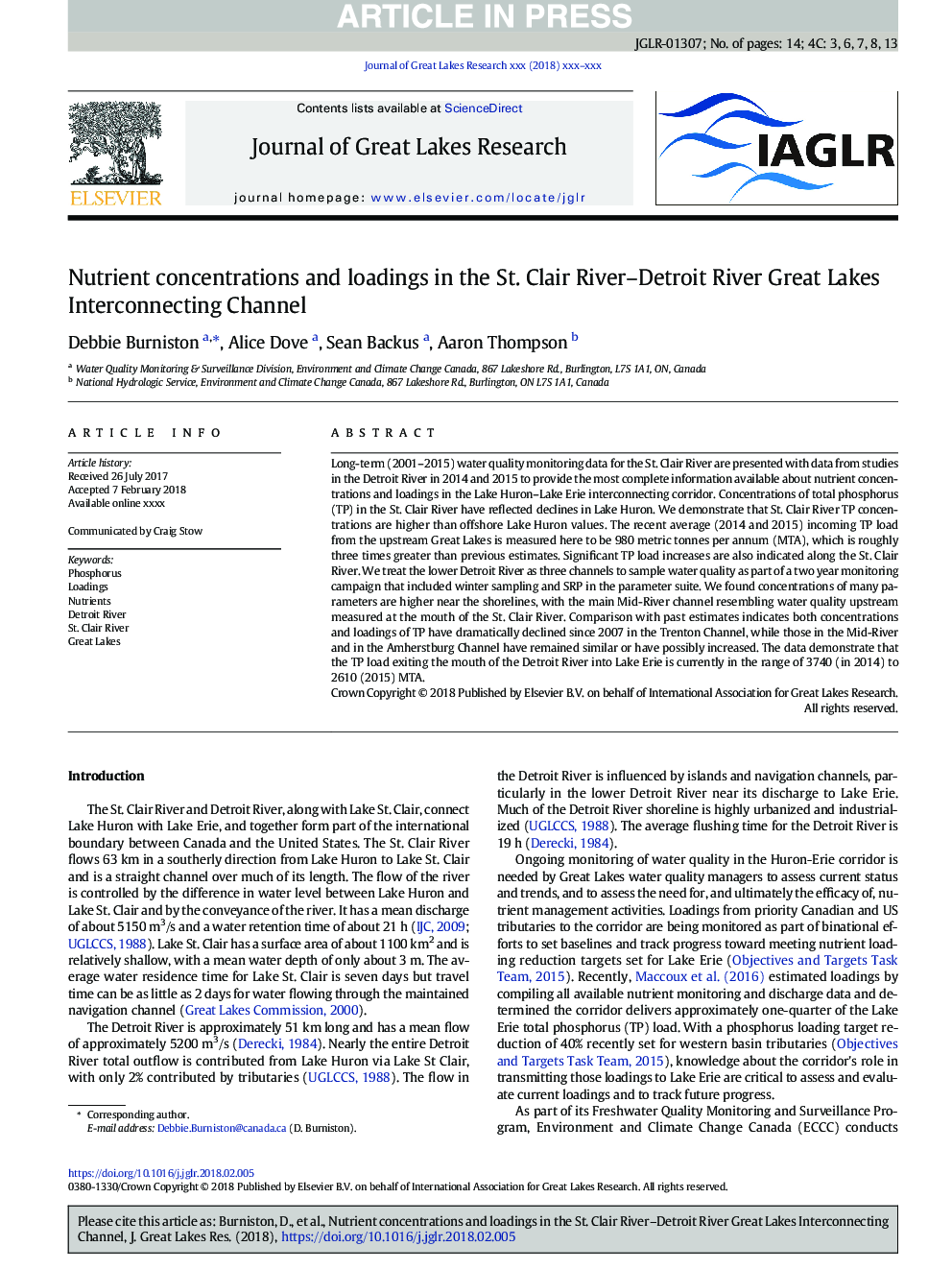| Article ID | Journal | Published Year | Pages | File Type |
|---|---|---|---|---|
| 8849104 | Journal of Great Lakes Research | 2018 | 14 Pages |
Abstract
Long-term (2001-2015) water quality monitoring data for the St. Clair River are presented with data from studies in the Detroit River in 2014 and 2015 to provide the most complete information available about nutrient concentrations and loadings in the Lake Huron-Lake Erie interconnecting corridor. Concentrations of total phosphorus (TP) in the St. Clair River have reflected declines in Lake Huron. We demonstrate that St. Clair River TP concentrations are higher than offshore Lake Huron values. The recent average (2014 and 2015) incoming TP load from the upstream Great Lakes is measured here to be 980Â metric tonnes per annum (MTA), which is roughly three times greater than previous estimates. Significant TP load increases are also indicated along the St. Clair River. We treat the lower Detroit River as three channels to sample water quality as part of a two year monitoring campaign that included winter sampling and SRP in the parameter suite. We found concentrations of many parameters are higher near the shorelines, with the main Mid-River channel resembling water quality upstream measured at the mouth of the St. Clair River. Comparison with past estimates indicates both concentrations and loadings of TP have dramatically declined since 2007 in the Trenton Channel, while those in the Mid-River and in the Amherstburg Channel have remained similar or have possibly increased. The data demonstrate that the TP load exiting the mouth of the Detroit River into Lake Erie is currently in the range of 3740 (in 2014) to 2610 (2015) MTA.
Related Topics
Physical Sciences and Engineering
Earth and Planetary Sciences
Earth and Planetary Sciences (General)
Authors
Debbie Burniston, Alice Dove, Sean Backus, Aaron Thompson,
